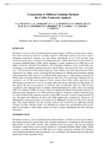Por favor, use este identificador para citar o enlazar este ítem:
http://www.alice.cnptia.embrapa.br/alice/handle/doc/885752Registro completo de metadatos
| Campo DC | Valor | Lengua/Idioma |
|---|---|---|
| dc.contributor.author | FRANCO, O. L. | pt_BR |
| dc.contributor.author | ANDRADE, A. E. | pt_BR |
| dc.contributor.author | BARROS, E. V. S. A. | pt_BR |
| dc.contributor.author | SA, M. F. G. de | pt_BR |
| dc.contributor.author | CARNEIRO, R. M. D. G. | pt_BR |
| dc.contributor.author | CARNEIRO, R. | pt_BR |
| dc.contributor.author | EIRA, M. T. S. da | pt_BR |
| dc.contributor.author | ROCHA, T. L. | pt_BR |
| dc.contributor.author | REIS, A. M. dos | pt_BR |
| dc.date.accessioned | 2011-04-13T11:11:11Z | pt_BR |
| dc.date.available | 2011-04-13T11:11:11Z | pt_BR |
| dc.date.created | 2011-04-13 | pt_BR |
| dc.date.issued | 2007 | pt_BR |
| dc.identifier.citation | In:INTERNATIONAL CONFERENCE ON COFFEE SCIENCE, 21., 2006, Montpellier, France. Table of contents... Montpellier, France: Association for Science and Information on Coffee, 2007. 1 CD-ROM. | pt_BR |
| dc.identifier.uri | http://www.alice.cnptia.embrapa.br/alice/handle/doc/885752 | pt_BR |
| dc.description | Proteomic methods, such as bidimensional electrophoresis (2-DE) and mass spectrometry, have been extensively used for the study of protein differential expression in several plants including Arabidopsis thaliana, rice and wheat. Specifically in the 2-DE method, deep attention must be given to the protein staining technique, which often involves silver nitrate or Coomassie Brilliant Blue (CBB). Silver staining is usually preferred over CBB due to the higher sensitivity obtained. Nevertheless, silver-staining resolution could significantly vary according to the studied organism and more specifically to the researched tissue. In Coffea spp., 2-DE analysis has been rarely employed. Some studies of protein expression have been reported in this culture mainly involving the biosynthesis of caffeine and metabolism during seed germination. The study of the global protein expression in coffee plants in response to biotic stress conditions had not been reported until now. Phytonematode infection can be considered one of the most important biotic stresses that affect coffee production and Meloidogyne paranaensis is one of the major nematode species that infects coffee plants. In this report, the protein expression of infected- and non-infected roots of coffee (Coffea canephora) were analyzed and the protein pattern determined by 2-DE. Gels were stained with silver nitrate or CBB, in order to obtain an optimized method for proteomic analysis of plant-nematode interaction. The 2-DE analysis revealed an enhanced number of protein spots, as well as differentially expressed proteins, when CBB was used. A total of approximately 70 and 100 spots were observed in silver and CBB stained gels, respectively. Moreover, 18 differentially expressed proteins were observed in CBB gels, and only 8 in the silver stained gels. This report showed that the staining method was crucial for an optimized protein analysis of coffee. Similar results were obtained for cotton roots and therefore these results may be extended to other plant species in order to better understand the host-pathogen interaction. | pt_BR |
| dc.language.iso | eng | eng |
| dc.rights | openAccess | eng |
| dc.subject | Proteomic method | pt_BR |
| dc.subject | Bidimensional electrophoresis | pt_BR |
| dc.title | Comparison of different staining methods for coffee proteomic analysis. | pt_BR |
| dc.type | Artigo em anais e proceedings | pt_BR |
| dc.date.updated | 2011-04-13T11:11:11Z | pt_BR |
| riaa.ainfo.id | 885752 | pt_BR |
| riaa.ainfo.lastupdate | 2011-04-13 | pt_BR |
| dc.contributor.institution | UNIVERSIDADE CATÓLICA DE BRASÍLIA; MARIA FATIMA GROSSI DE SA, CENARGEN; REGINA MARIA DECHECHI G CARNEIRO, CENARGEN; IAPAR; MIRIAN THEREZINHA SOUZA DA EIRA, SAPC; THALES LIMA ROCHA, CENARGEN; ANGELA MEHTA DOS REIS, CENARGEN. | pt_BR |
| Aparece en las colecciones: | Artigo em anais de congresso (SAPC)  | |
Ficheros en este ítem:
| Fichero | Descripción | Tamaño | Formato | |
|---|---|---|---|---|
| ComparisonofDifferent.pdf | 1.97 MB | Adobe PDF |  Visualizar/Abrir |









